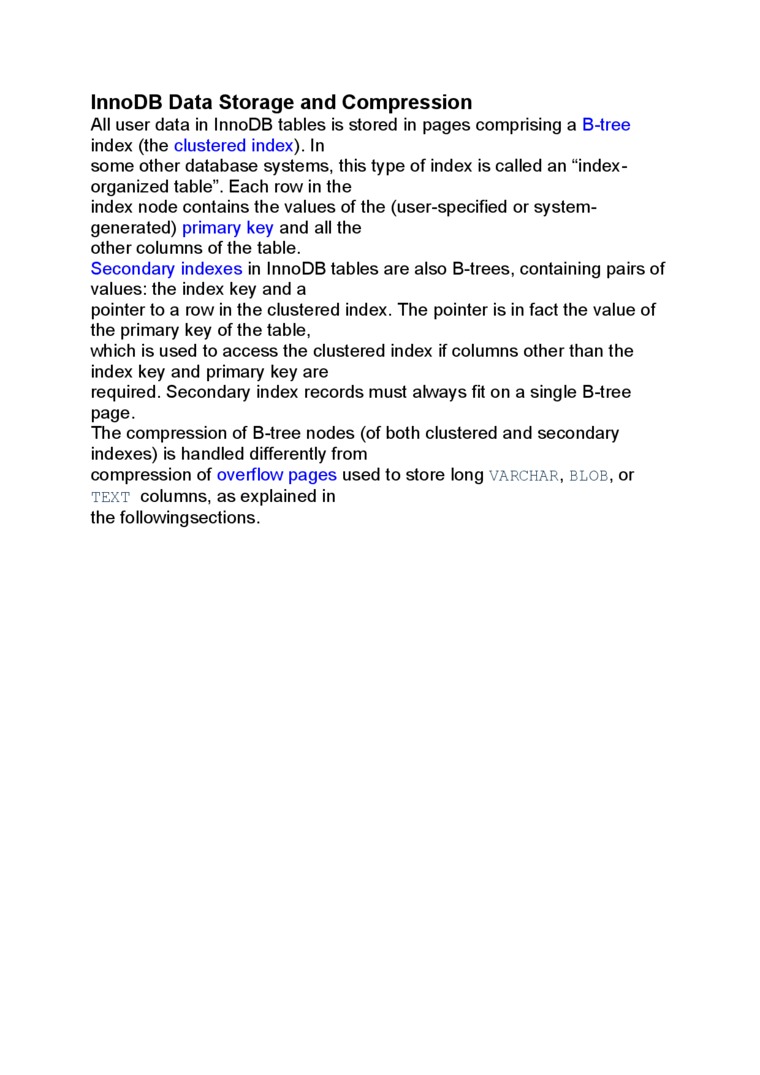79512

InnoDB Data Storage and Compression
Ali user data in InnoDB tables is stored in pages comprising a B-tree index (the clustered index). In
some other database Systems, this type of index is called an “index-organized table". Each row in the
index node contains the values of the (user-specified or system-generated) primary key and all the other columns of the table.
Secondary indexes in InnoDB tables are also B-trees, containing pairs of values: the index key and a
pointer to a row in the clustered index. The pointer is in fact the value of the primary key of the table,
which is used to access the clustered index if columns other than the index key and primary key are
required. Secondary index records must always fit on a single B-tree page.
The compression of B-tree nodes (of both clustered and secondary indexes) is handled differently from
compression of overflow pages used to storę long varchar, blob, or text columns, as explained in the followingsections.
Wyszukiwarka
Podobne podstrony:
InnoDB Data Storage and Compression Ali user data in InnoDB tables is stored In pages comprising a B
al creatures 18 Magical colors L J AVE FUN AND GET CREATIVE when coloring in your magical creatures.
Clipper Chip lipper Cl 1 >P Ali Government groups in your Power Structure gain the ability to li
Big Data Architecture Google Storage Server Big Data Architecture Google columnar storage and
Sweden 130 GEOTECHNICAL STORAGE AND RETRIEYAL SYSTEMS Data from geotechnical 1nvestigat1ons are in S
Constraints on lnvalid Data By default, MySQL is forgiving of irwalid or improper data values and co
dynamic and compressed Row Formats This section discusses the dynamic and compressed row formats for
The csv Storage Engine The CSV storage engine Stores data in text files using comma-separated values
rQP Codę : 13915 •/) Insert one row of data in the tablc wlth Roli Number 715. Student* Kime ‘lliral
42Domains and Contexts of Information Science in the Digital Age: Networks - Information - Data -
f14 5 Bi Add Data Source Select which ODBC driver you want to use from the list, then choose OK. OK
f32 3 Browser Web Server *CGI programs *External programs Storage and retrieval of Web pages •Brows
How SQL Sen/er Organizes Data in Rows? Data Header Fixed Data NB VB Variable
126 Krzysztof Waliszewski using the services of investment advice must be given a brochure and compr
więcej podobnych podstron